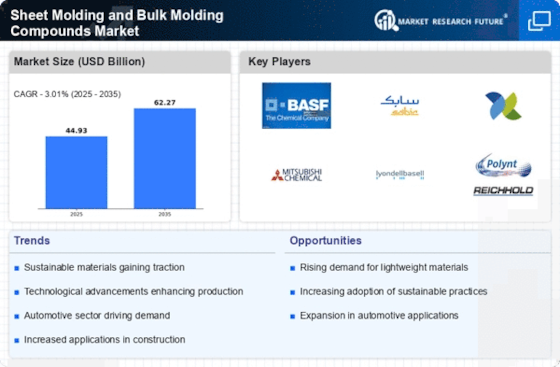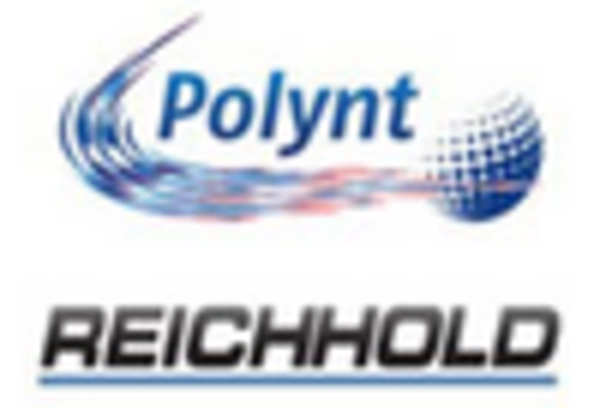Growth in Construction Activities
The construction industry is witnessing a resurgence, which is positively impacting the Sheet Molding and Bulk Molding Compounds Market. With urbanization and infrastructure development on the rise, there is an increasing need for materials that provide durability and aesthetic appeal. These compounds are favored for their ability to withstand harsh environmental conditions, making them ideal for various construction applications. In 2025, the construction sector is expected to contribute significantly to the market, as builders seek materials that not only enhance structural integrity but also offer design flexibility. The integration of these compounds in construction projects suggests a promising outlook for the market, as they align with the industry's focus on sustainability and efficiency.
Rising Demand in Automotive Sector
The automotive sector is experiencing a notable surge in demand for lightweight and durable materials, which is propelling the Sheet Molding and Bulk Molding Compounds Market. As manufacturers strive to enhance fuel efficiency and reduce emissions, the adoption of these compounds is becoming increasingly prevalent. In 2025, the automotive industry is projected to account for a significant share of the market, driven by the need for components that offer both strength and weight reduction. The versatility of sheet molding and bulk molding compounds allows for the production of complex shapes, which is essential for modern vehicle designs. This trend indicates a robust growth trajectory for the market, as automotive manufacturers continue to prioritize innovative materials that meet stringent regulatory standards.
Increasing Focus on Lightweight Materials
The emphasis on lightweight materials across multiple industries is driving growth in the Sheet Molding and Bulk Molding Compounds Market. As companies aim to improve energy efficiency and reduce operational costs, the demand for lightweight yet strong materials is escalating. This trend is particularly evident in sectors such as aerospace and transportation, where weight reduction is critical for performance. In 2025, the market is expected to see a substantial increase in the adoption of these compounds, as they offer a favorable strength-to-weight ratio. The shift towards lightweight materials suggests a transformative phase for the market, as industries increasingly recognize the benefits of incorporating these advanced compounds into their products.
Technological Innovations in Manufacturing
Technological advancements in manufacturing processes are transforming the Sheet Molding and Bulk Molding Compounds Market. Innovations such as automated production lines and advanced molding techniques are enhancing efficiency and reducing production costs. These developments enable manufacturers to produce high-quality compounds with improved properties, catering to diverse applications across various sectors. In 2025, the market is likely to benefit from these technological improvements, as they facilitate the creation of customized solutions that meet specific client requirements. The ongoing evolution in manufacturing technology indicates a competitive landscape, where companies that adopt these innovations may gain a significant advantage in the market.
Sustainability and Environmental Regulations
The growing emphasis on sustainability and adherence to environmental regulations is shaping the Sheet Molding and Bulk Molding Compounds Market. As governments and organizations implement stricter guidelines to reduce carbon footprints, manufacturers are compelled to adopt eco-friendly materials and processes. This shift is leading to an increased demand for compounds that are recyclable and produced with minimal environmental impact. In 2025, the market is likely to experience growth driven by the need for sustainable solutions across various sectors, including automotive and construction. The alignment of market offerings with sustainability goals indicates a proactive approach by manufacturers, positioning them favorably in an increasingly environmentally conscious marketplace.



















Leave a Comment